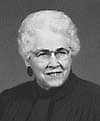June 1, 2007
Can standard earplugs or earmuffs protect you from the deep rumble of a turbine or the piercing noise of an ultrasonic welder–sounds outside the tested range of those protectors? That subject is addressed in a new Sound Source™ Bulletin recently released by the Bacou-Dalloz Hearing Safety Group. The Bulletin, Sound Source #12, is authored by noted audiologist Brad Witt, and is available for free on the company’s website at http://www.hearingportal.com/hearingconservation/hc-snd-ame.asp
According to Witt, who is Audiology and Regulatory Affairs Manager for the Hearing Safety Group, most industrial noise falls in the mid-range of human hearing: between 20 and 20,000 Hertz (Hz). However, he writes, "There are some specialized pieces of machinery that emit noise levels near the lower and upper limits of the audible range–the low-frequency rumbling of some turbines or mining equipment, for example, in the frequencies below 100 Hz, or the piercing high-frequency noise of an ultrasonic welder emitting 15,000 – 20,000 Hz."
Standard hearing protectors, on the other hand, are typically tested from 125 to 8,000 Hz, as indicated on the packaging. Will they still provide protection? There are two parts to this answer, says Witt.
First, the human ear offers some built-in protection. Human hearing is much less sensitive to low and high frequency sound. "A 100 dB sound at 100 Hz will sound much softer than a 100 dB sound at 1,000 Hz, because the ear’s sensitivity in the low frequencies is about 20 dB lower," says Witt, and human adult sensitivity to high-frequency noise is so low that a high-frequency noise device has actually been marketed to break up groups of loitering teens by emitting shrill sounds that adults apparently cannot hear.
Second, earplugs and earmuffs do continue to offer protection beyond their tested range. Says Witt, "In the extended high frequencies, nearly any well-fit earplug or earmuff will offer good protection–about 35 dB. But in the extended low-frequency range, hearing protectors have a harder job to block incoming sound, offering 10-25 dB of protection in the lowest audible frequencies."
When combined with the ear’s lower sensitivity, however, that low frequency protection should still be adequate. A more common complaint, says Witt, is the "annoyance and discomfort, headaches and fatigue" caused by low frequency noise, the vibrations from which are "felt" more readily than heard.
Sound Source is a periodic publication of the Bacou-Dalloz Hearing Safety Group, addressing questions and topics relating to hearing conservation and hearing protection. Sound Source bulletins are offered as a public service and are freely available from the company’s website at http://www.hearingportal.com/hearingconservation/hc-snd-ame.asp


